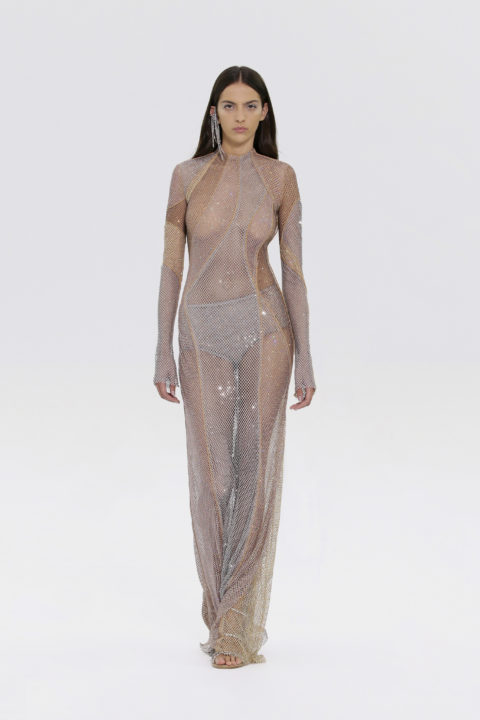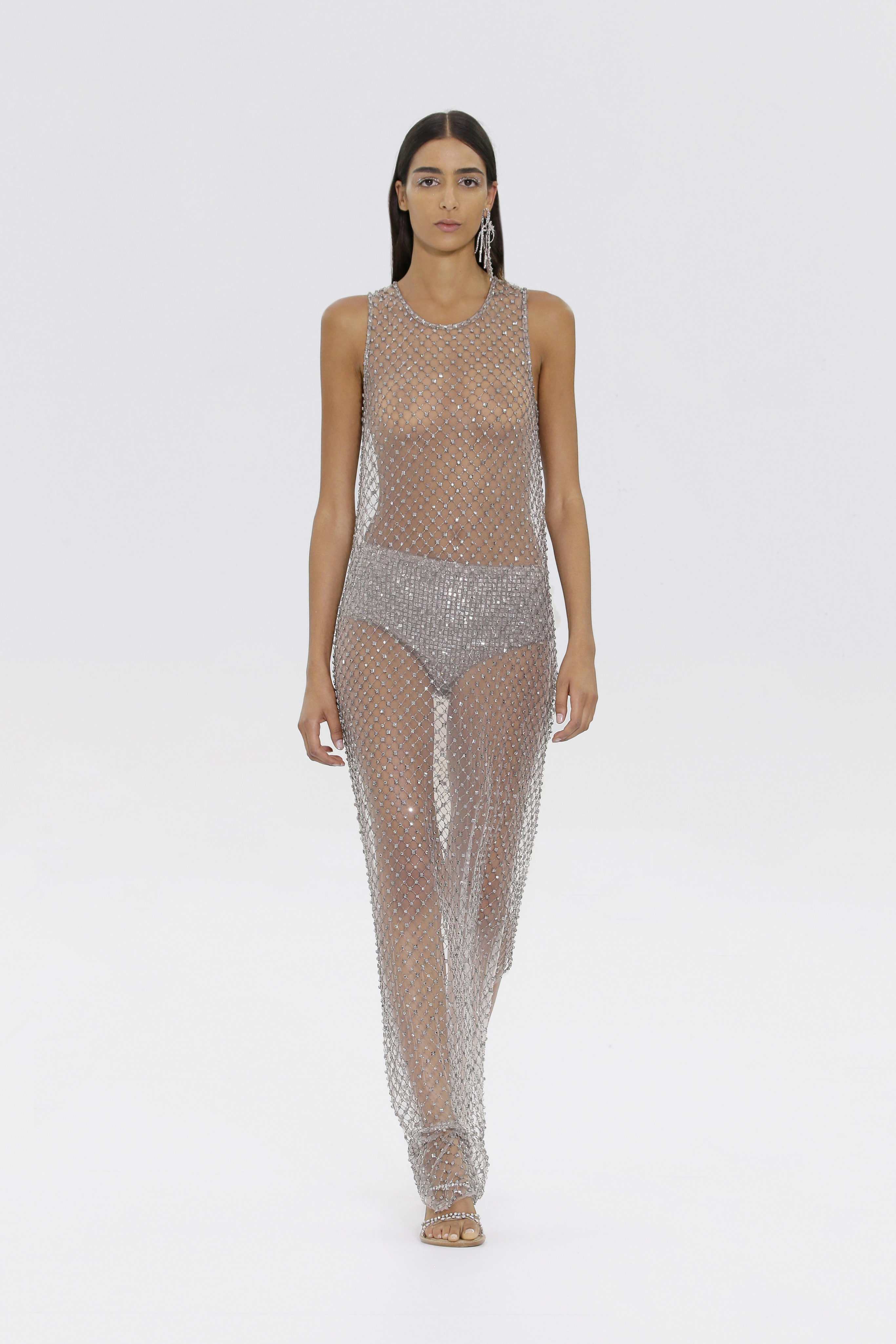At Haute Couture week, designers’ rejection of bodily censorship only applied to thin models.
Hemlines are higher, fabrics are sheerer and cut-outs reign supreme — skin is in, and the most recent Haute Couture Week was no exception.
On the surface, the rise of risqué clothing is a celebration of our newfound bodily freedom. But by featuring exclusively waify models in these wares, designers send the message that skin-baring self-expression is only acceptable on thin people.
Take Schiaparelli. Creative director Daniel Roseberry’s collection was all about playful displays of nudity. Exposed breasts were accentuated with nipple covers, sculptural designs and mesh, while chain materials featured stomach-baring cut-outs that swung as leggy models strutted down the catwalk. Wide-brim hats cast a shadow over some of the models’ faces, making exposed body parts (namely flat stomachs) the focal point.
Cut-outs were also seen at the Jean Paul Gaultier presentation. The collection, designed by Olivier Rousteing, was an ode to slender silhouettes, with upper thighs, pelvic bones and toned torsos peeking through the clothing. While the creative director of Balmain did bring some body diversity to the runway by enlisting curve model Precious Lee, the overtly skin-baring pieces were shown only on thin models.
And then there was Fendi’s couture collection. The Italian fashion house sent a lineup of sheer gowns with exposed breasts, thigh gaps and flat stomachs down the runway in Paris. Vogue said the collection captured an “elegance” reminiscent of the work by late artistic director Karl Lagerfeld. Unironically, Lagerfeld famously defended the fatphobic practice of only hiring thin runway models.

What it all comes down to is this: By glorifying thin figures on the haute couture runways, designers perpetuate the idea only those body types can participate in high fashion. And at this point, using a flat stomach as an accessory is just boring.
The revival of Y2K fashion has brought back skin-baring fashion and forced the industry to reckon with its legacy of fatphobia. The early aughts maintained the “heroin-chic” aesthetic of the ‘90s that worshiped an unhealthy standard of thinness. During the original era of micro-mini skirts, low-rise jeans and teeny baby tees, it wasn’t so much the clothes that were “in,” but the bodies those clothes could fit onto. As 2000s styles re-emerge, these fraught ideals are materializing on the catwalk once again.
Brands like Blumarine and Sultry Virgin have dedicated entire collections to skimpy Y2K styles. But their retrospective collections inadvertently glorified 2000s standards of thinness by excluding larger sizes. This troubling trend continues with contemporary collections. Take recent viral runway shows by Mowalola and Thom Browne, which used risqué designs to touch on topics like censorship, sexual oppression and restrictive gender norms. These powerful messages ultimately fell flat because they were not presented on a diverse group of models.
And even when larger people are featured on the runway, they are still subject to unrealistic beauty standards. “If you’re fat, you’ve probably noticed how being plus size is only considered good or fashionable on a very specific body type,” model Jessica Blair said in a TikTok video. She adds that curve runway models often still have the sought-after hourglass figure. “Even plus-size models who aren’t necessarily thin usually have a flat stomach.”
That’s not to say there’s not been progress. From Collina Strada enlisting models in wheelchairs to Maryam Nassir showcasing scantily-clad curve models, the needle is moving, just not as quickly as it should be.
Made with precision to fit the wearer, haute couture is meant to offer escapism through tailoring, unusual textiles and imaginative designs. Couture is, at its core, about breaking boundaries. So why is there not more body diversity? Such collections are the perfect opportunity to redefine “fantasy” fashion by including everyone in sartorial dreamworlds, not just thin people. Because ultimately, representation shouldn’t be a fantasy. And a flat stomach shouldn’t be the standard.
